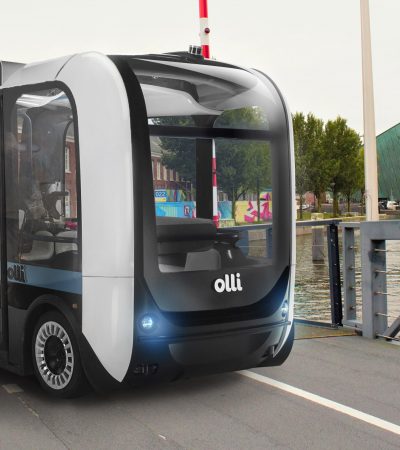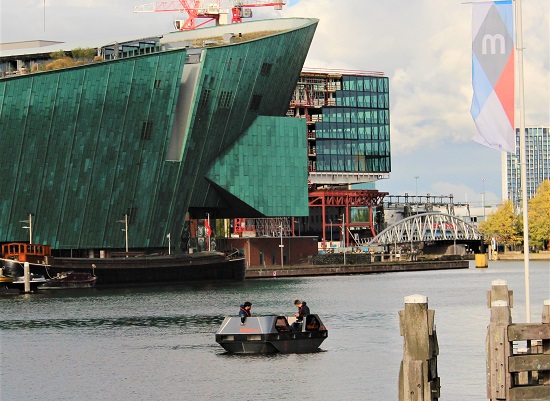The self-driving minibus Olli


Amsterdam is a city where water and technology go hand in hand. With Roboats this tradition is carried on. The boats offer a variety of solutions to urban problems, such as carrying people and goods, and collecting waste. Roboat trials are currently under way on Marineterrein Amsterdam.
The Roboat project is the first experiment with self-driving boats that the world has ever seen. Thanks to sensors and scanners, the boats can navigate through the water autonomously and ‘learn’ from the traffic conditions.
Amsterdam’s streets are becoming fuller. But water transport offers a solution to traffic jams and congestion. Roboats can be used to transport goods and people, but also to collect waste. Serving as a ‘floating waste bin’, they can scoop up litter from Amsterdam’s canals and help separate it for recycling.
The boats can also be linked together within a matter of hours to form a stage on the water, or even a temporary bridge.
Fully autonomous, self-driving boats
Laser image detection and ranging (LIDAR) data used to navigate and ‘learn’ from the environment
First tests were carried out in 2017
High manoeuvrability
Suitable for transporting persons or goods
Amsterdam is the first city where Roboats could be used
After initial tests in 2017, larger-scale testing was carried out in 2018 at Marineterrein Amsterdam, the home of AMS Institute. These tests will shortly be followed up and extended by deploying Roboats in the canals of Amsterdam. If the experiment is successful, then the boats can also help to improve infrastructure and waste processing in other cities with canals and rivers.
The Roboat project is part of Marineterrein Amsterdam Living Lab.
These companies and organizations are involved in this experiment